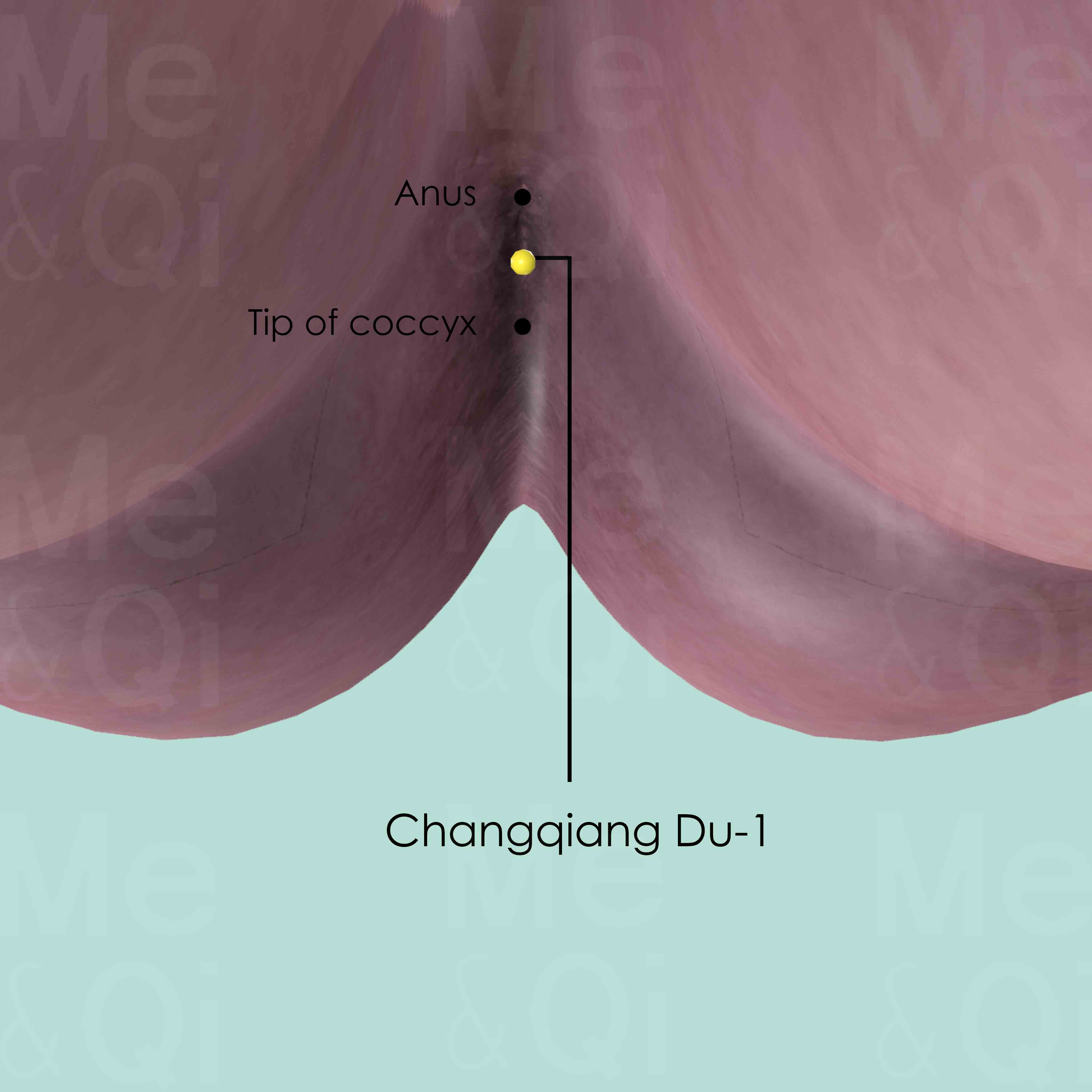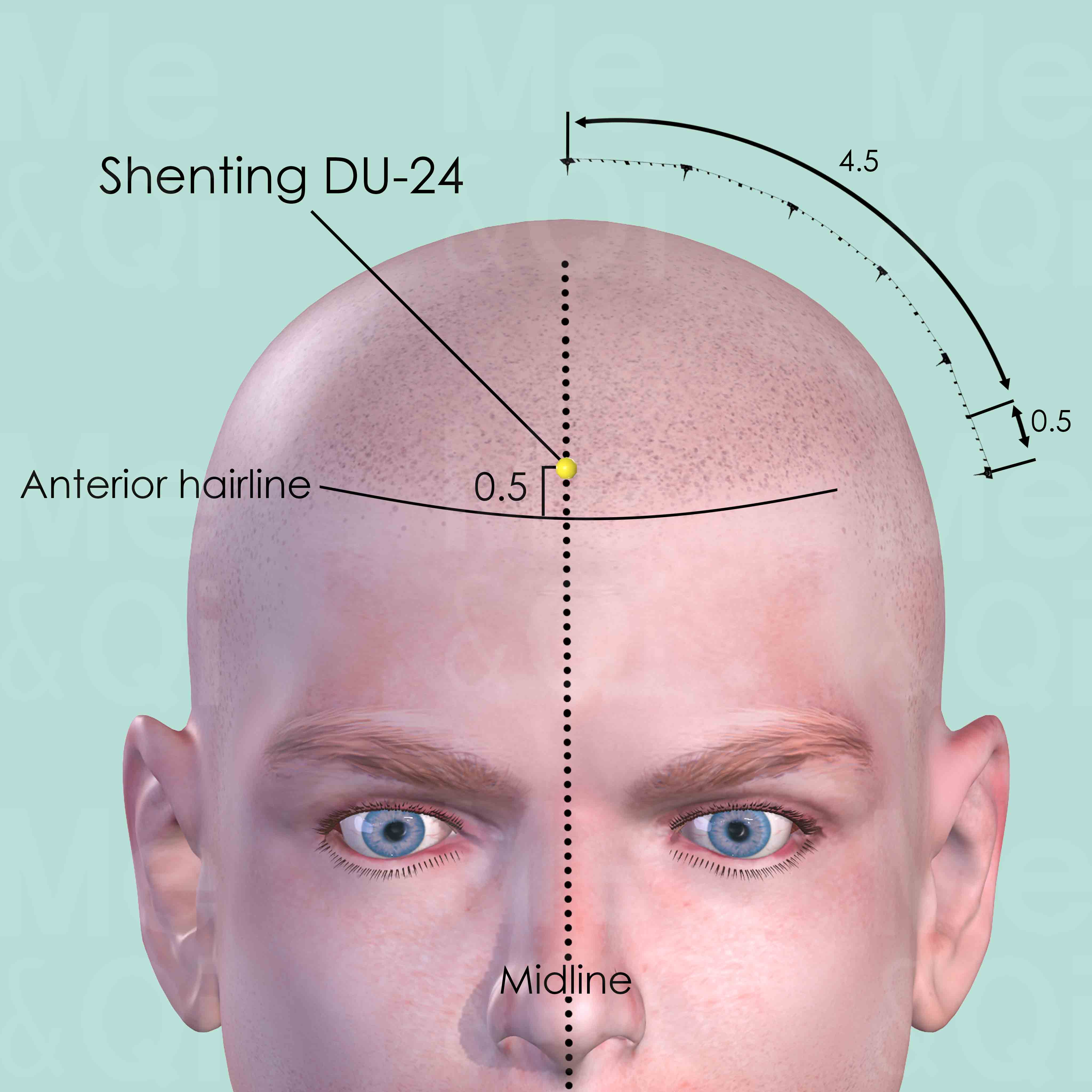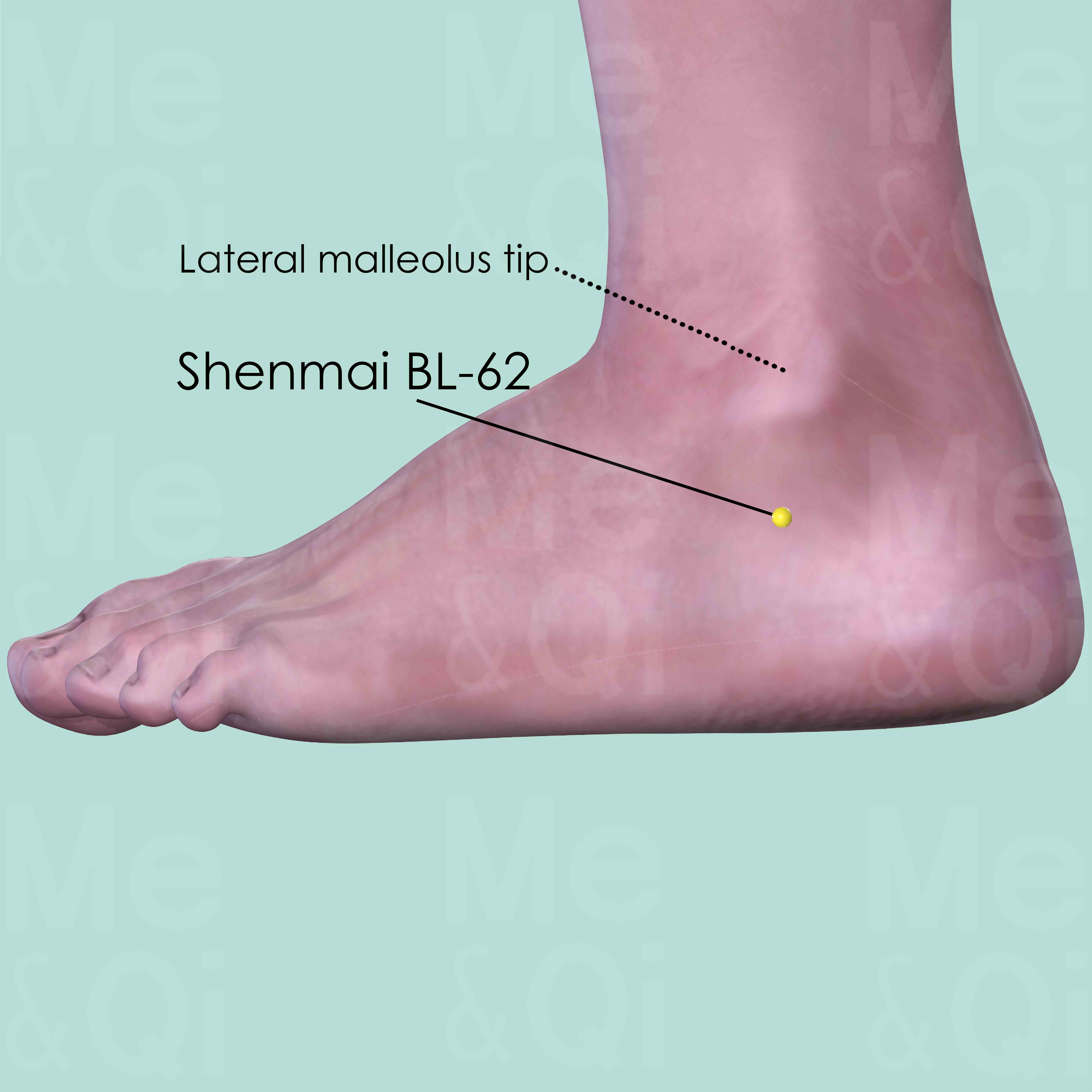Opisthotonosaccording to TCM
Symptom family: Muscle Spasms and Twitching
What is Opisthotonos?
Opisthotonos is a condition characterized by extreme backward arching of the body and spine, often described as a severe form of spasm where the back muscles contract forcefully. This posture can be a response to severe neurological or metabolic disturbances.
It results in an alarming presentation where the individual's head, neck, and spinal column enter into a pronounced curvature, lifting the body off the ground or surface, supported only by the head and heels in some cases. This symptom is indicative of significant underlying health issues, necessitating prompt medical evaluation and treatment.
How does TCM view Opisthotonos?
From a Traditional Chinese Medicine (TCM) standpoint, opisthotonos is seen through a unique lens that diverges significantly from Western medical perspectives. TCM interprets this condition as a manifestation of internal disharmony and imbalance within the body's fundamental elements and energy channels.
It underscores the importance of identifying the specific patterns of disharmony that contribute to the development of opisthotonos, as it believes that addressing these root causes can restore balance and health. This approach emphasizes the interconnectedness of bodily systems and the flow of Qi, or vital energy, in the maintenance of health.
Root Causes of Opisthotonos in TCM
In TCM, opisthotonos is primarily associated with internal Wind and Heat disturbances that disrupt the balance of Yin and Yang within the body. One key pattern involves Heat victorious stirring Wind, where Excessive Heat in the body leads to the stirring up of Internal Wind, resulting in symptoms such as opisthotonos, high fever, convulsions, and stiff neck.
The pattern highlights the critical role of internal Heat and Wind in the development of severe muscular spasms and postural distortions.
Explore below more details about what might cause Opisthotonos according to TCM.
- By Syndrome
- By Organ
- Wind
- Heat
- Liver
Wind
In TCM "Wind" is a concept that represents a pattern of disharmony, often characterized by its sudden and unpredictable nature, much like a gusty wind changing direction without warning. This pattern is associated with symptoms that come and go quickly or move around the body, such as itching, tremors, or even certain types of pain. Wind is considered to be a primary cause of illnesses that have these rapidly changing characteristics. In TCM, external Wind often refers to illnesses that start suddenly, like the common cold, believed to be caused by external pathogenic factors like climatic changes. On the other hand, internal Wind can be linked to internal imbalances and can manifest in conditions like dizziness or spasms. ... see more
Wind Patterns That Can Lead to Opisthotonos
Common Symptoms: High Fever Convulsions Stiff Neck Loss Of Consciousness Limb Twitching Eyeballs Turning Up Clenching Of Teeth Hand Tremor
| Pattern Name | Relevant Symptoms | Relevant Formulas |
|---|---|---|
| Heat victorious stirring Wind | Opisthotonos, High fever, Loss of consciousness, Limb twitching, Convulsions, Stiff neck, Eyeballs turning up, Clenching of teeth... see more | Ling Jiao Gou Teng Tang |
| Liver Wind agitating Internally due to extreme Heat | Opisthotonos, High fever, Convulsions, Stiff neck, Hand tremor | Ling Jiao Gou Teng Tang | Tian Ma Gou Teng Yin | Feng Yin Tang |
Heat
In TCM "Heat" signifies an excess of Yang energy, leading to an imbalance where heat predominates over the body's cool Yin aspects. This condition is metaphorically akin to an internal over-heating. Symptoms indicative of Heat can include feelings of warmth, fever, sweating, irritability, red face, thirst with a preference for cold drinks, and a rapid pulse. The tongue may appear red with a yellow coating. Unlike the common interpretation of heat in terms of temperature, in TCM, it represents a state of hyperactivity or inflammation in the body.... see more
Heat Patterns That Can Lead to Opisthotonos
Common Symptoms: High Fever Convulsions Stiff Neck Loss Of Consciousness Limb Twitching Eyeballs Turning Up Clenching Of Teeth Hand Tremor
| Pattern Name | Relevant Symptoms | Relevant Formulas |
|---|---|---|
| Heat victorious stirring Wind | Opisthotonos, High fever, Loss of consciousness, Limb twitching, Convulsions, Stiff neck, Eyeballs turning up, Clenching of teeth... see more | Ling Jiao Gou Teng Tang |
| Liver Wind agitating Internally due to extreme Heat | Opisthotonos, High fever, Convulsions, Stiff neck, Hand tremor | Ling Jiao Gou Teng Tang | Tian Ma Gou Teng Yin | Feng Yin Tang |
Liver
In TCM the Liver is viewed as the organ responsible for the smooth flow of Qi, Blood, and emotions throughout the body. It plays a key role in regulating mood, storing blood, supporting digestion, and ensuring the health of tendons and eyes. When the Liver malfunctions or is imbalanced in TCM, it can lead to a range of issues such as irritability, mood swings, menstrual irregularities, eye problems, and muscular stiffness or pain. A malfunctioning Liver in TCM reflects not only physical disturbances but also emotional and mental disharmony, emphasizing the holistic approach of TCM in addressing health and wellness.... see more
Liver Patterns That Can Lead to Opisthotonos
Common Symptoms: High Fever Convulsions Stiff Neck Loss Of Consciousness Limb Twitching Eyeballs Turning Up Clenching Of Teeth Hand Tremor
| Pattern Name | Relevant Symptoms | Relevant Formulas |
|---|---|---|
| Heat victorious stirring Wind | Opisthotonos, High fever, Loss of consciousness, Limb twitching, Convulsions, Stiff neck, Eyeballs turning up, Clenching of teeth... see more | Ling Jiao Gou Teng Tang |
| Liver Wind agitating Internally due to extreme Heat | Opisthotonos, High fever, Convulsions, Stiff neck, Hand tremor | Ling Jiao Gou Teng Tang | Tian Ma Gou Teng Yin | Feng Yin Tang |
TCM Herbal Formulas for Opisthotonos
To counteract the effects of Wind and Heat leading to opisthotonos, TCM recommends specific formulas and herbs tailored to the individual's diagnosed pattern. Ling Jiao Gou Teng Tang is a principal formula used in cases where Heat stirs up internal Wind, featuring key ingredients like Saiga antelope's horns (Ling Yang Jiao) that pacify Internal Liver Wind and stop tremors.
This approach illustrates TCM's emphasis on formulaic treatment to target the underlying causes, aiming to extinguish Internal Wind and cool the Heat, thereby alleviating the severe symptoms associated with opisthotonos.
Explore below some TCM herbal formulas used to address opisthotonos, organized by cause and by formula type.
- By Cause
- By Formula Type
- Wind
- Heat
- Formulas that pacify and extinguish internal wind
- Formulas that dredge and disperse external wind
Top Formula for Wind:
Ling Jiao Gou Teng Tang
Suitable for Wind patterns that may cause opisthotonos, such as Heat victorious stirring Wind or Liver Wind agitating Internally due to extreme Heat
Learn moreAll Formulas Recommended for Opisthotonos Caused by Wind
| Formula | Patterns Suitable For |
|---|---|
| Ling Jiao Gou Teng Tang | Heat victorious stirring Wind, Liver Wind agitating Internally due to extreme Heat... see more |
| Tian Ma Gou Teng Yin | Liver Wind agitating Internally due to extreme Heat |
| Feng Yin Tang | Liver Wind agitating Internally due to extreme Heat |
Top Formula for Heat:
Ling Jiao Gou Teng Tang
Suitable for Heat patterns that may cause opisthotonos, such as Heat victorious stirring Wind or Liver Wind agitating Internally due to extreme Heat
Learn moreAll Formulas Recommended for Opisthotonos Caused by Heat
| Formula | Patterns Suitable For |
|---|---|
| Ling Jiao Gou Teng Tang | Heat victorious stirring Wind, Liver Wind agitating Internally due to extreme Heat... see more |
| Tian Ma Gou Teng Yin | Liver Wind agitating Internally due to extreme Heat |
| Feng Yin Tang | Liver Wind agitating Internally due to extreme Heat |
Formulas that pacify and extinguish Internal Wind
These formulas are suitable for some opisthotonos-causing patterns like Heat victorious stirring Wind or Liver Wind agitating Internally due to extreme Heat.
One such formula is Ling Jiao Gou Teng Tang, with saiga antelope's horns as a key herb.
Other formulas of this category are listed in the table below.
All "formulas that pacify and extinguish internal wind" recommended for opisthotonos
| Formula | Patterns Suitable For (if applicable) |
|---|---|
| Ling Jiao Gou Teng Tang | Heat victorious stirring Wind, Liver Wind agitating Internally due to extreme Heat... see more |
| Tian Ma Gou Teng Yin | Liver Wind agitating Internally due to extreme Heat |
Formulas that dredge and disperse External Wind
These formulas are suitable for some opisthotonos-causing patterns like Liver Wind agitating Internally due to extreme Heat.
One such formula is Feng Yin Tang, with dragon bones as a key herb.
Acupoints for Opisthotonos
TCM also prescribes acupuncture as a therapeutic intervention for opisthotonos, pinpointing specific acupoints believed to restore balance and facilitate healing. Notable acupoints include Baihui DU-20, known for its ability to expel Interior Wind and benefit the brain, and Changqiang Du-1, which calms the mind and regulates the lower orifices.
Other essential points are Fengfu DU-16, for nourishing marrow and expelling Wind, and Jinsuo DU-8, which pacifies Liver Wind and relieves spasms. These acupoints, selected for their strategic locations and actions, exemplify the TCM approach to treating opisthotonos by addressing the root causes of internal disharmony and promoting the smooth flow of Qi throughout the body.
Explore below some acupoints used to address opisthotonos, organized by meridian.
- By Meridian
- Governing Vessel
- Bladder Channel
- Liver Channel
- Gall Bladder Channel
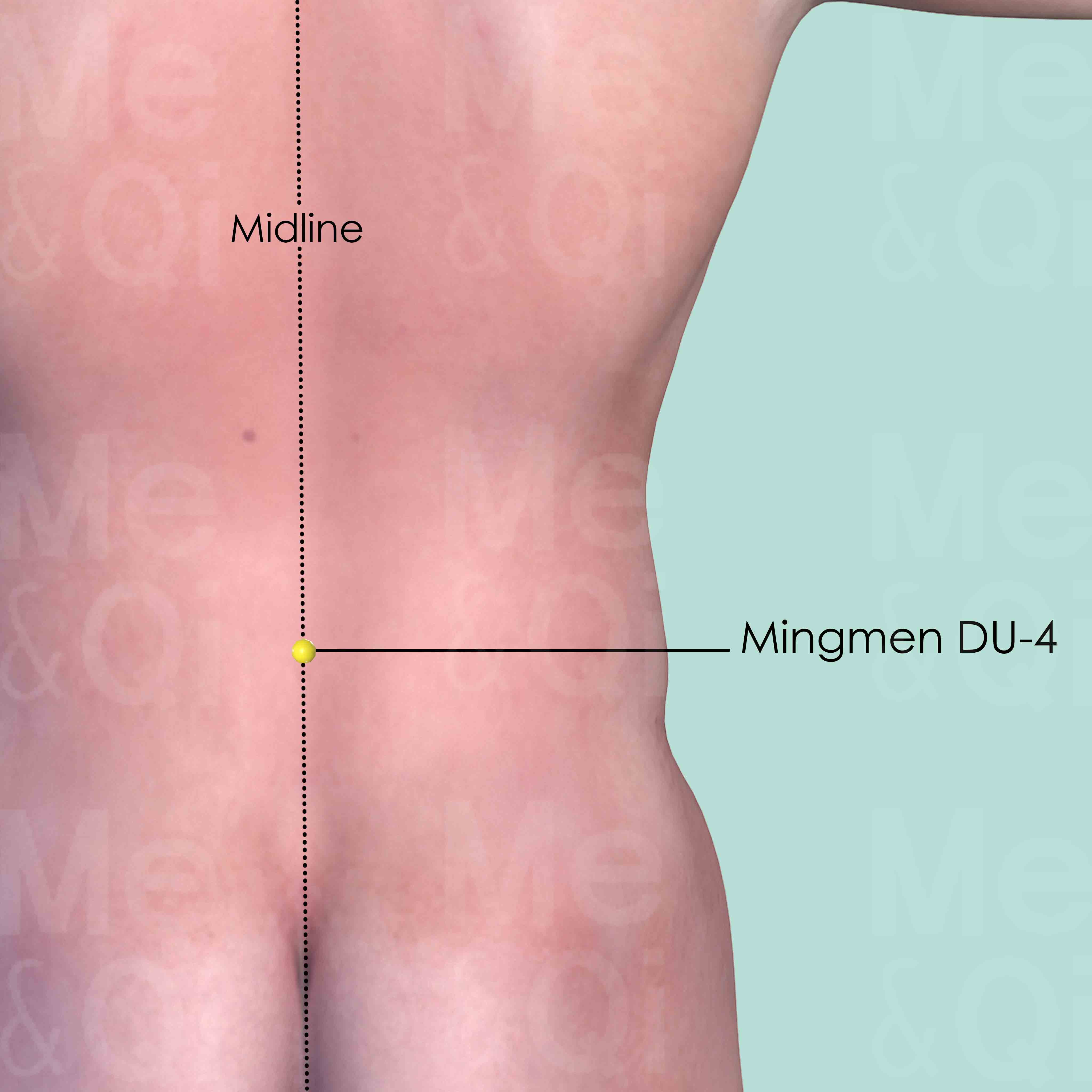
Mingmen DU-4
On the lower back midline, in the depression below the spinous process of the 2nd lumber vertebra (L2).
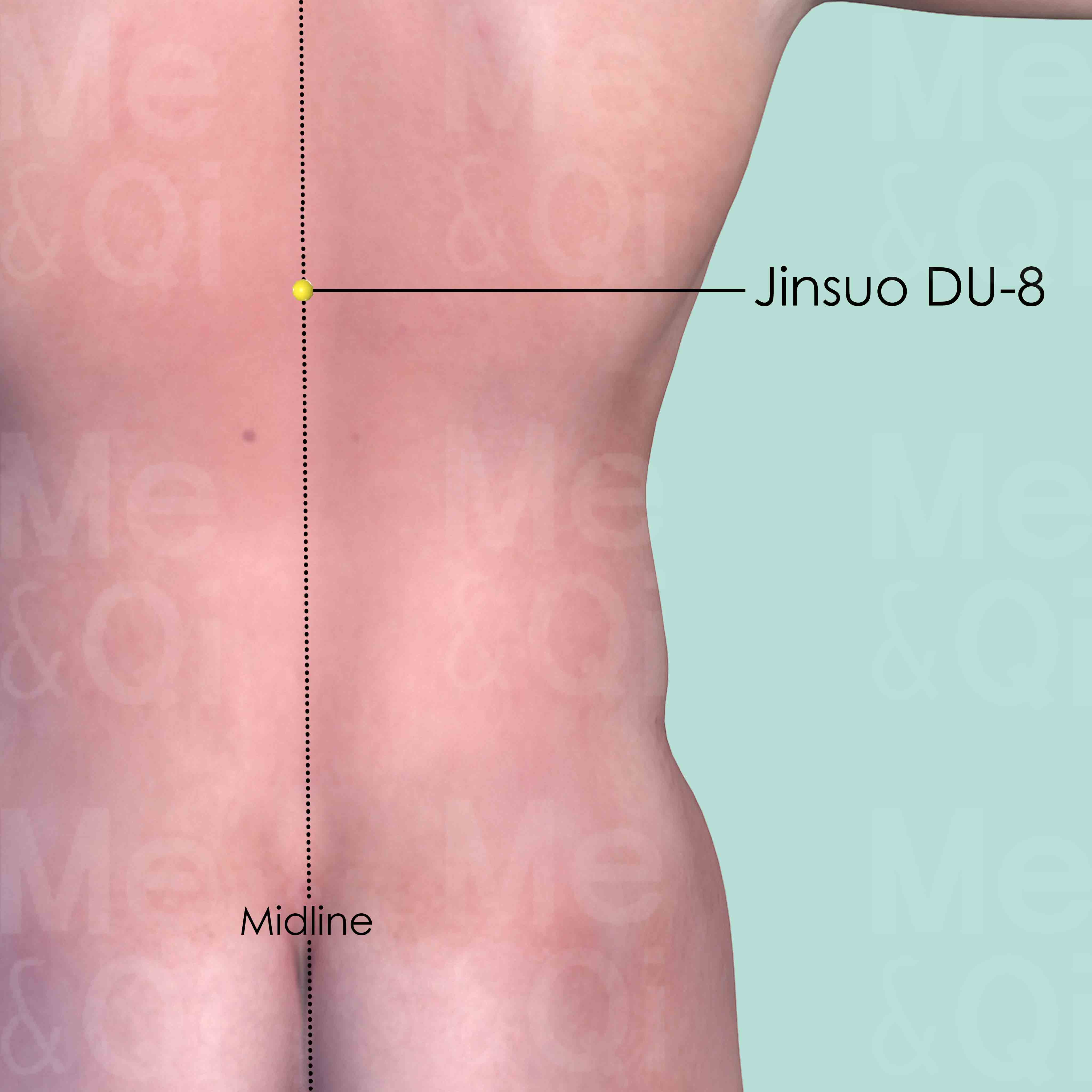
Jinsuo DU-8
On the back midline, in the depression below the spinous process of the 9th thoracic vertebra (T9).
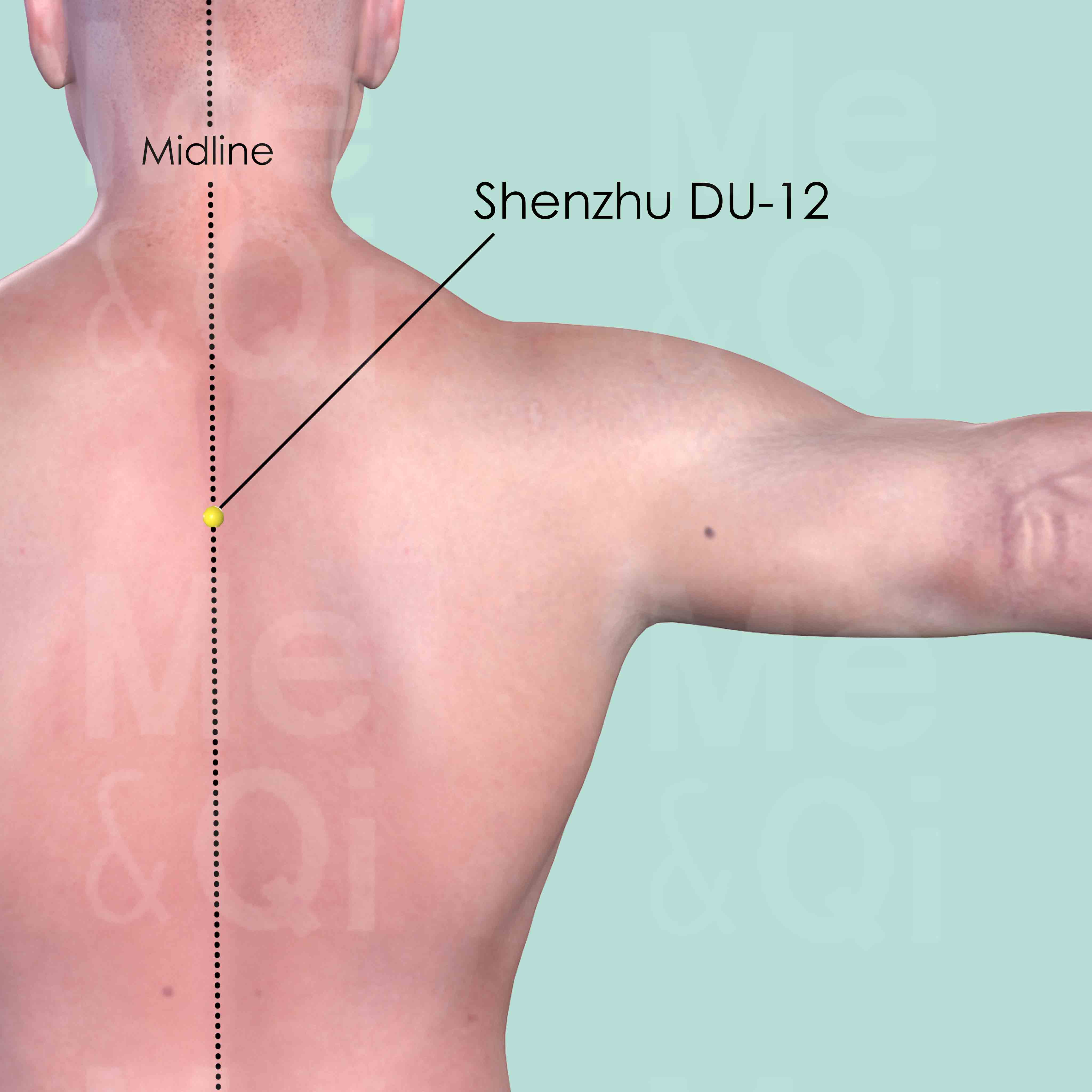
Shenzhu DU-12
On the back midline, in the depression below the spinous process of the 3th thoracic vertebra (T3).
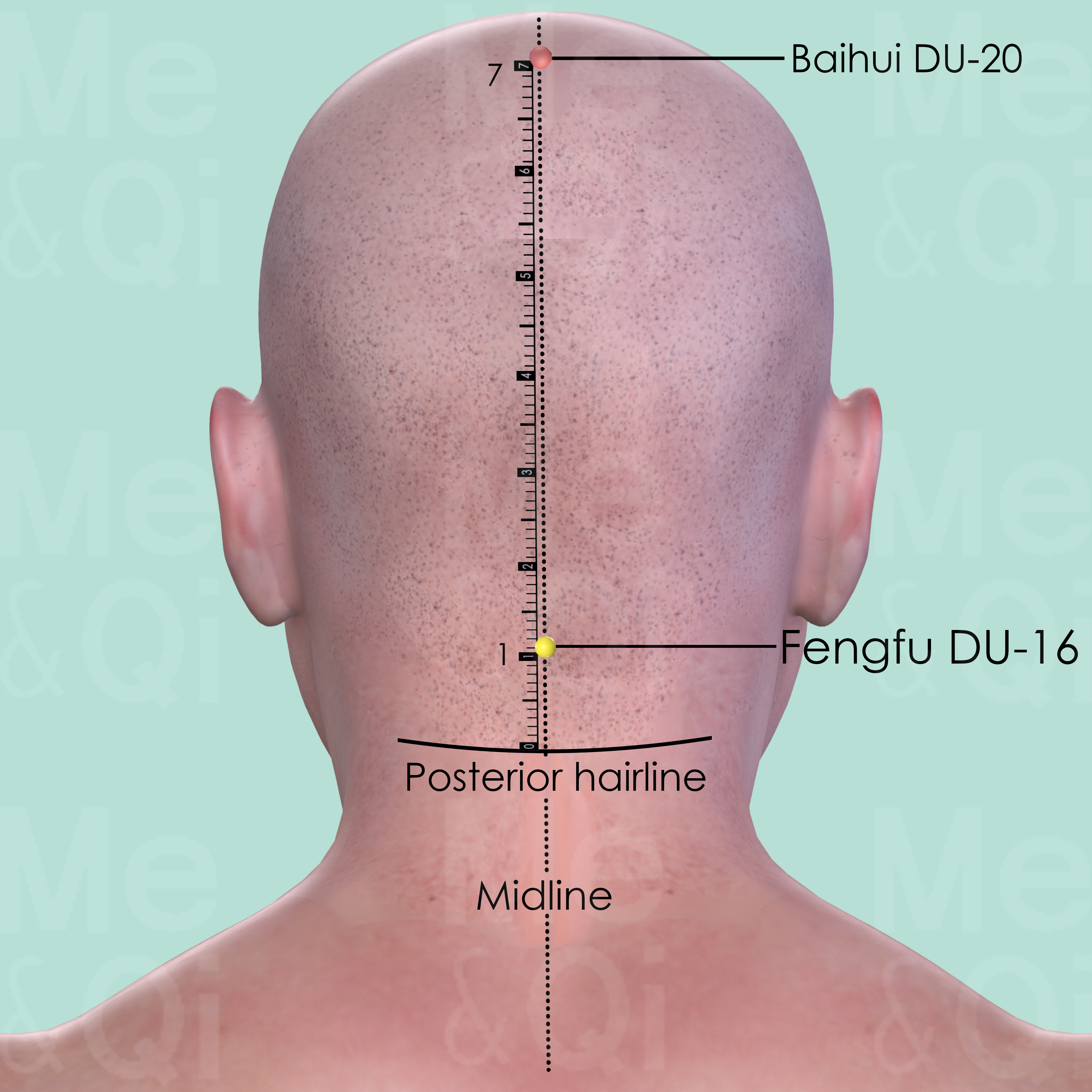
Fengfu DU-16
Directly below the external occipital protuberance, in the depression between the origins of the trapezius muscle.
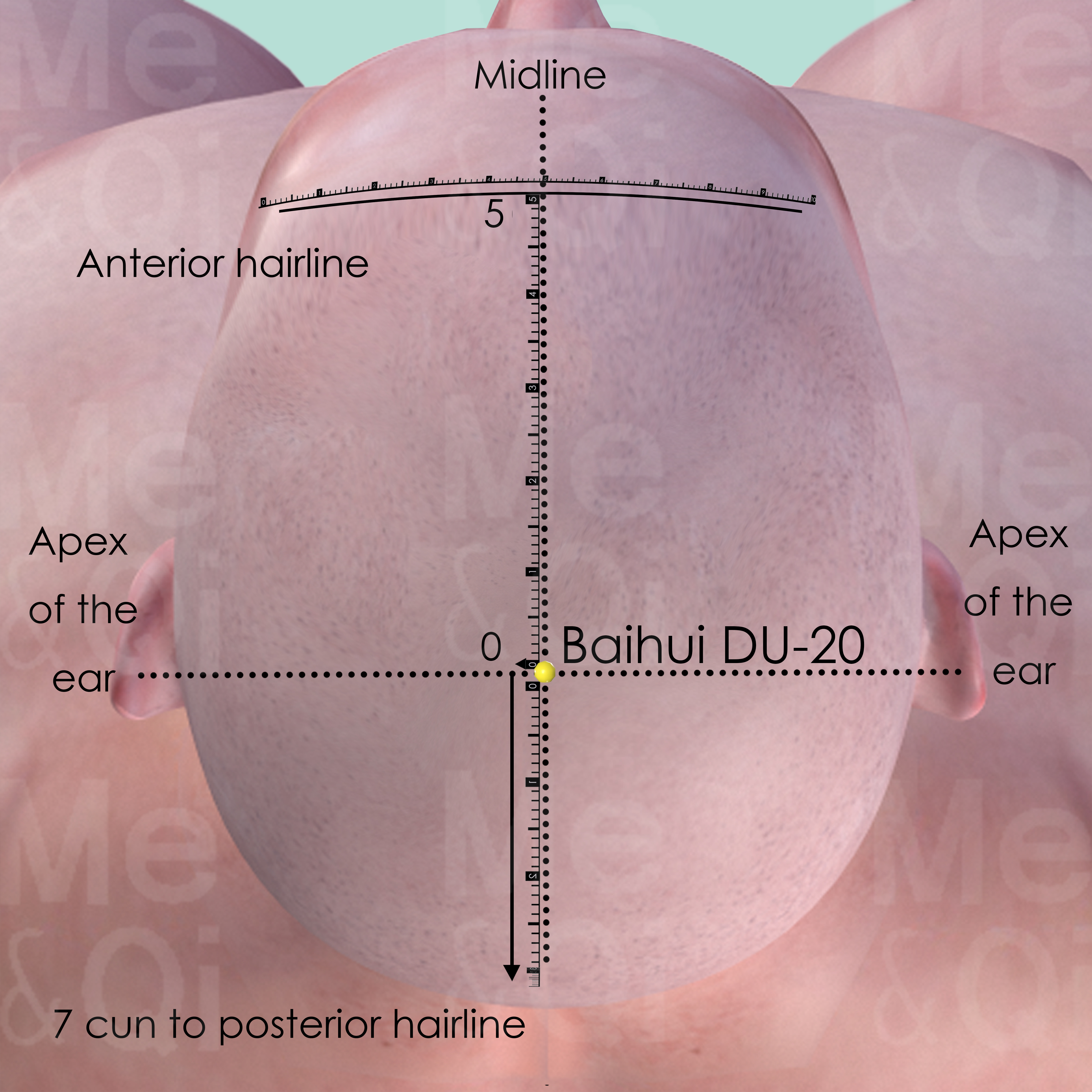
Baihui DU-20
At the vertex, at the junction of a line connecting the apex of the ears and the midline, in the depression 7 cun above the posterior hairline and 5 cun behind the anterior hairline.
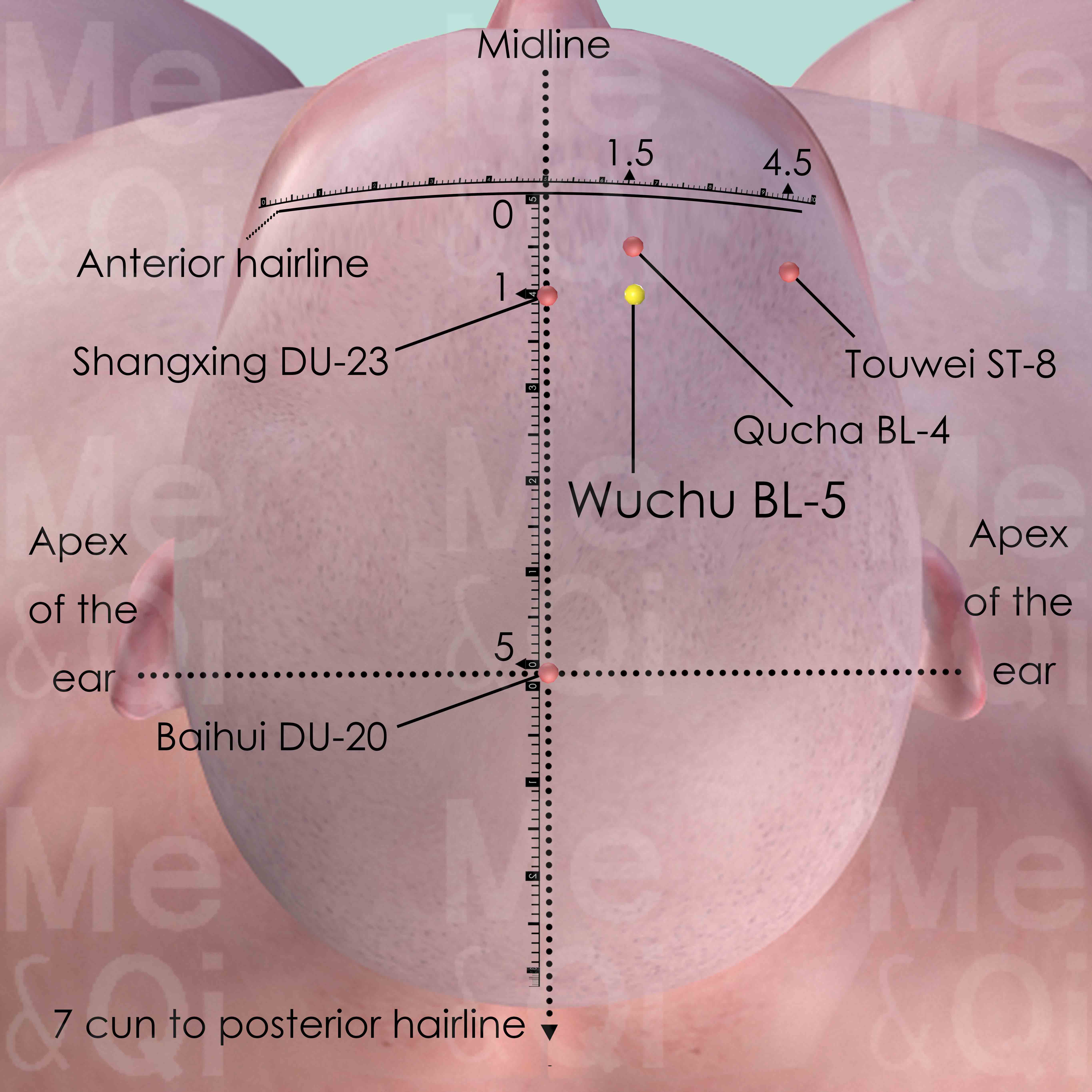
Wuchu BL-5
1 cun within the anterior hairline and 1.5 cun lateral to the anterior midline. It is also 0.5 cun posterior to Quchai BL-4.
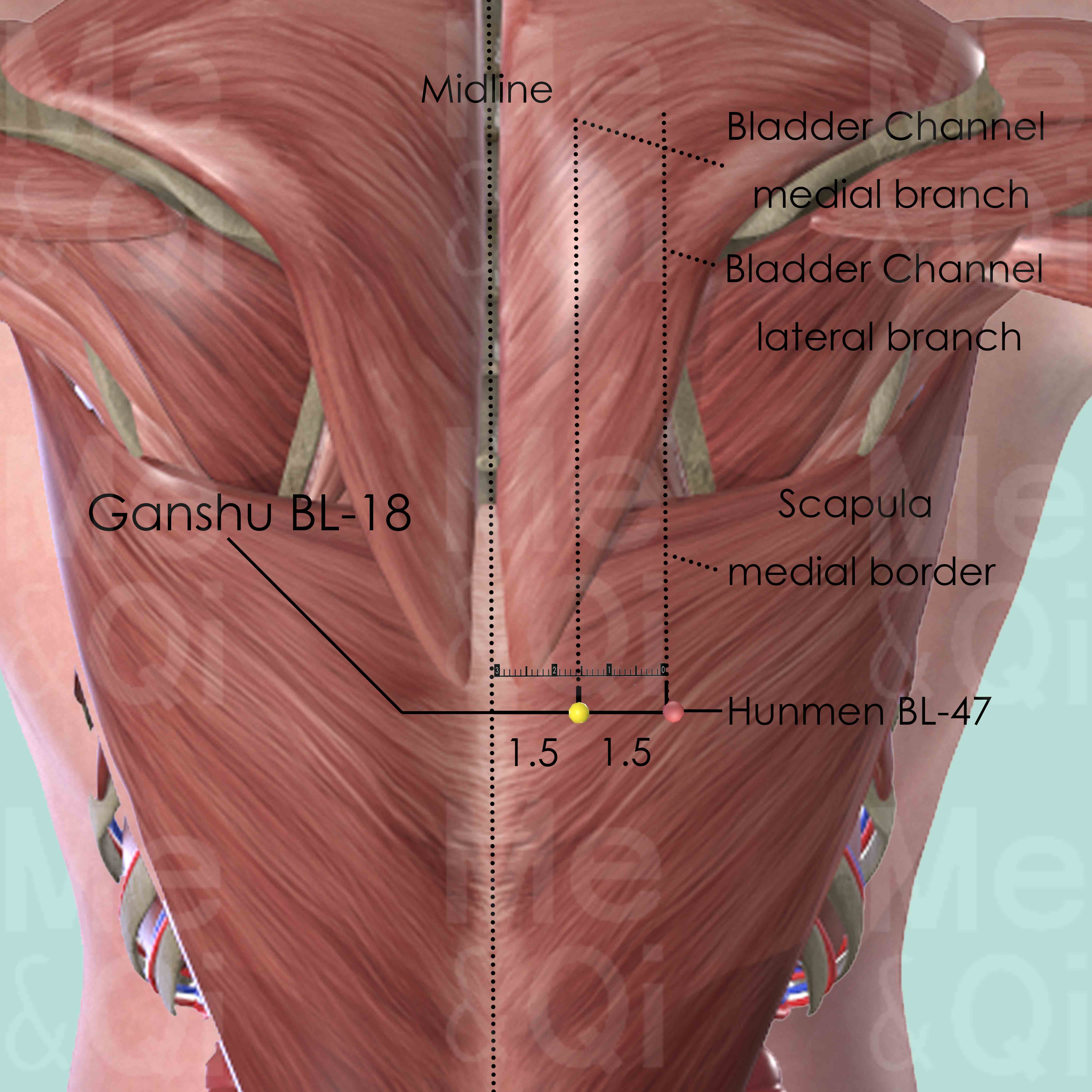
Ganshu BL-18
1.5 cun lateral to the lower border of the spinous process of the 9th thoracic vertebra (T9).
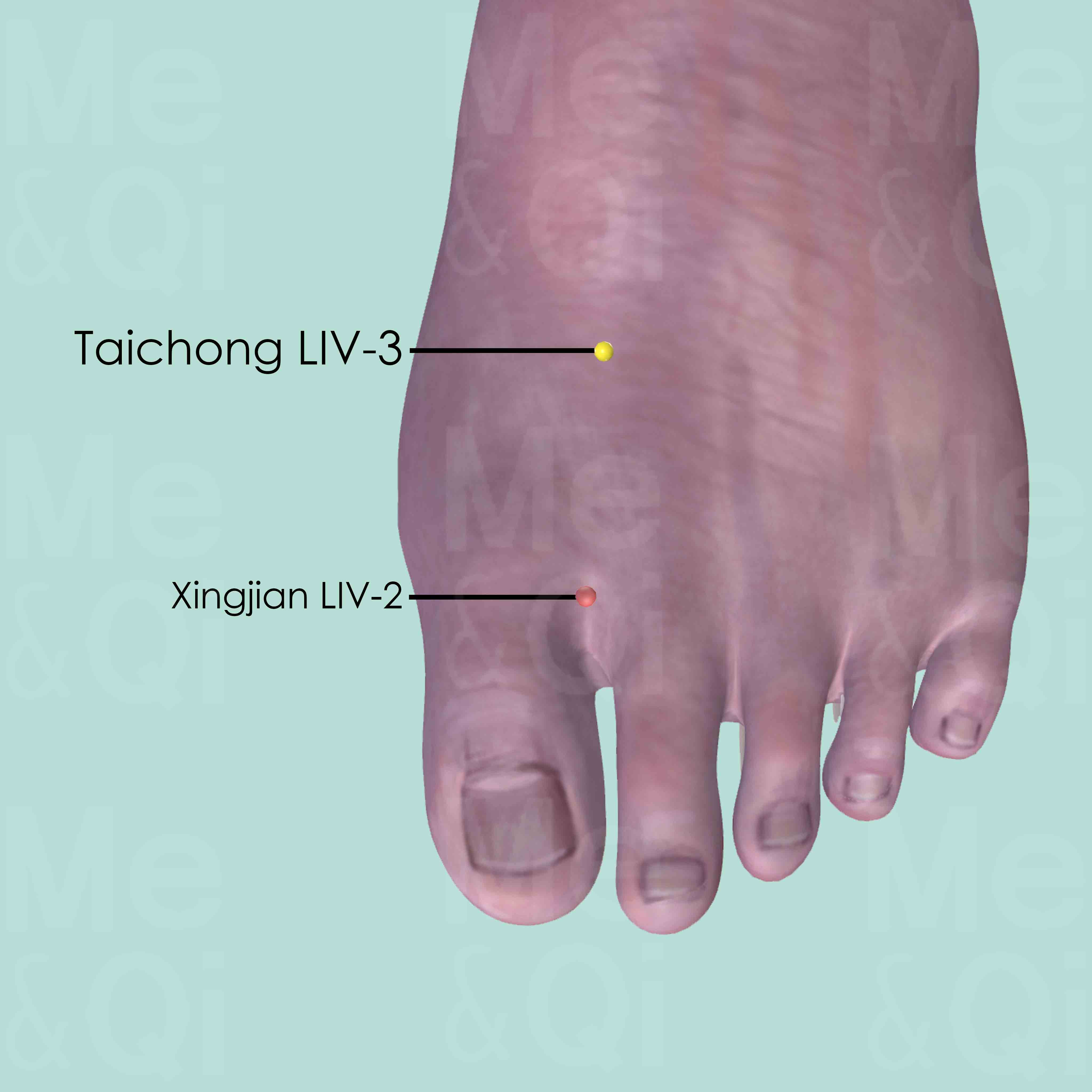
Taichong LIV-3
On the dorsum of the foot, between the 1st and 2nd metatarsal bones, in the depression proximal to the metatarsophalangeal joints and the proximal angle between the two bones.
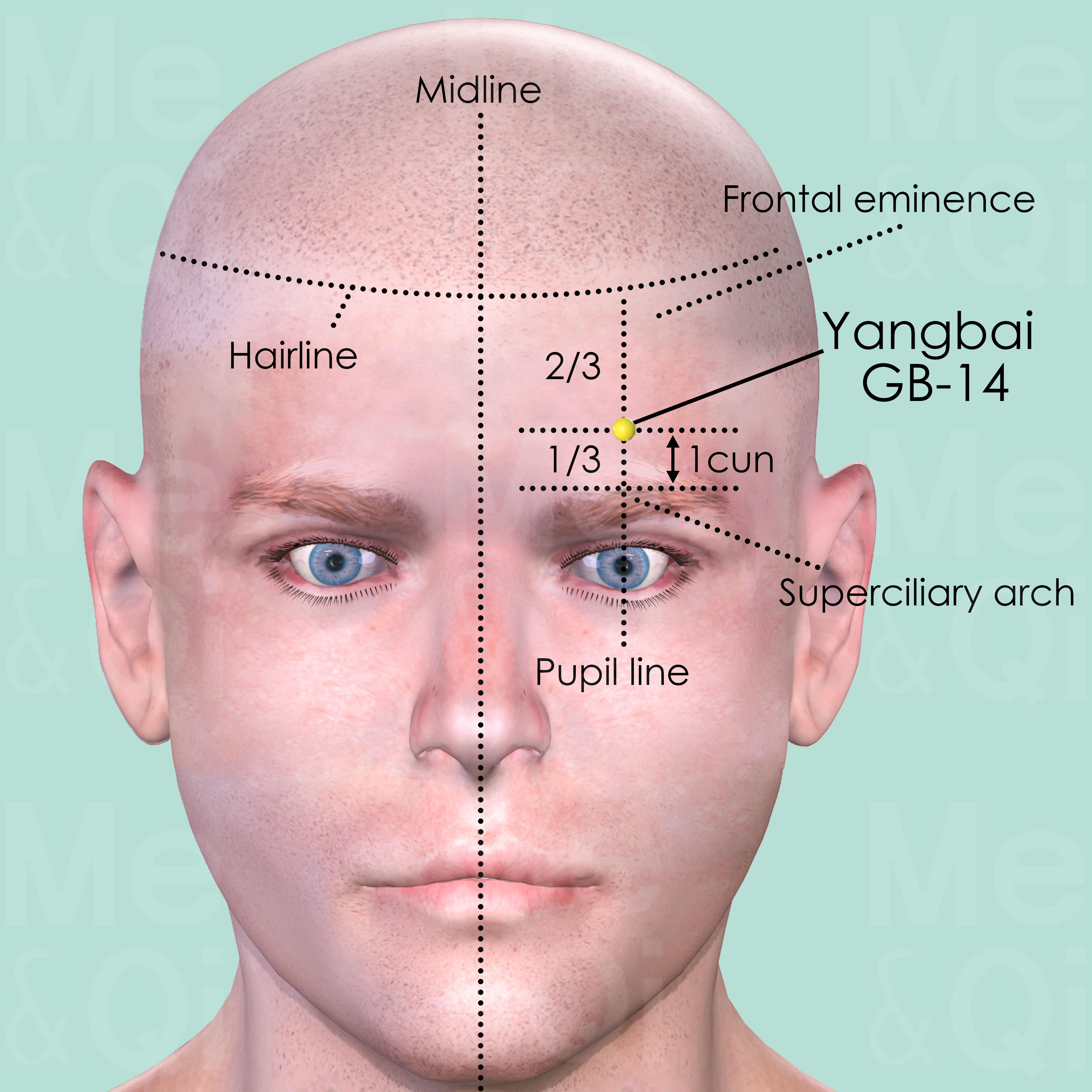
Yangbai GB-14
On the forehead, 1 cun above the midpoint of the eyebrow, approximately at the junction of the upper two-thirds and lower third of the vertical line draw from the anterior hairline to the eyebrow.

